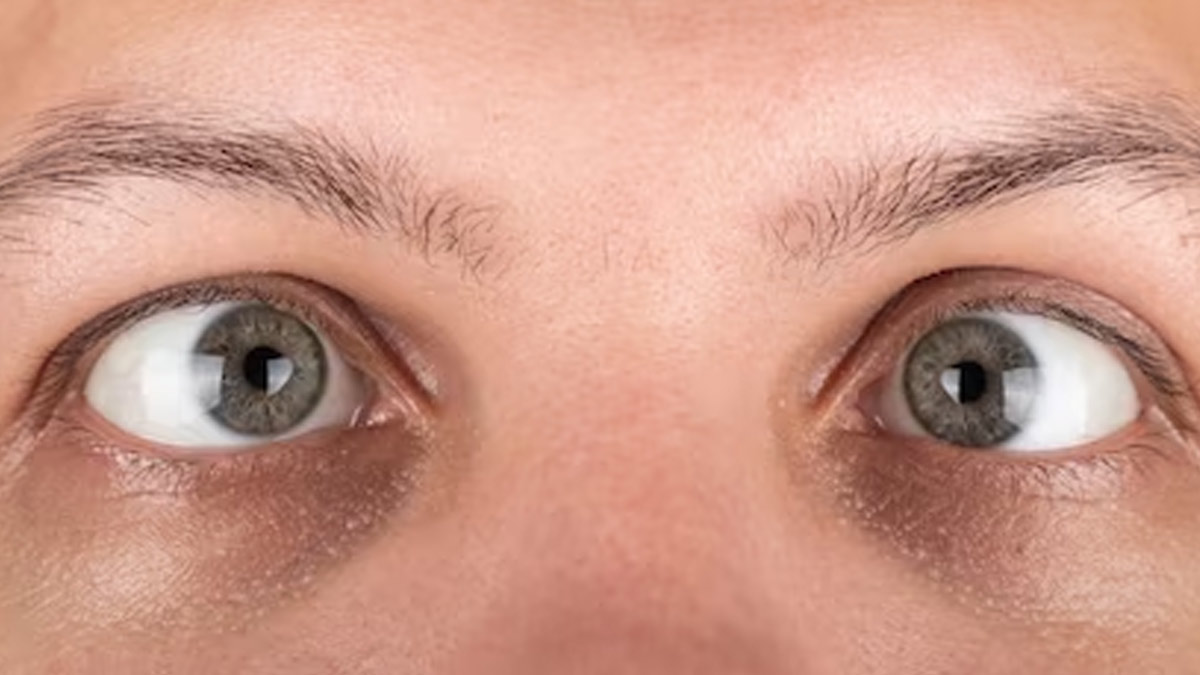
If you notice a problem in the alignment of your eyes, you may be suffering from a medical condition called strabismus. It is a condition in which the eyes do not always look in the same direction. This misalignment can be constant or intermittent, occurring in one or both eyes. We spoke to Dr Ajay Sharma, Chief Medical Director, EyeQ, who explained this condition and the measures to manage it.
Table of Content:-
What Is Strabismus?

Dr Sharma said that strabismus is a condition that affects the alignment of the eyes, preventing them from focusing on the same point simultaneously. It is also known as squint eyes and is brought on by weak eye muscle control. Other causes include concentrating issues, poor nerve signals to the eye muscles, and an incorrect balance of the eye muscles. These issues can cause eyeballs to converge or diverge, which would interfere with the eye's normal operation. Under normal circumstances, the six muscles that regulate eye movement cooperate and direct both eyes in the same direction. Although it can happen at any age, it is most prevalent in young children.
Also Read: Waking Up With Swollen Eyes? Expert Explains Its Causes & Treatment
Symptoms Of Strabismus
Dr Sharma listed the symptoms of strabismus as follows:
- An eye that is not straight is one of the key signs. Your brain makes almost no attempt to fix the eye when the misalignment is severe and evident, and it does not produce many symptoms.
- Headaches and eyestrain are felt when the misalignment is less severe or if it is not consistent.
- Additionally, reading may cause weariness, shaky or unstable vision, and difficulty finding a comfortable reading position.
- When exposed to direct sunshine, your toddler might occasionally squint one eye or tilt his head to use both eyes simultaneously.
- Amblyopia, a condition that causes vision loss in the misaligned eye, can also result from it.
How To Prevent Strabismus

The following precautions should be taken in order to avoid developing strabismus:
Dr Sharma highlighted that closing one's eyes when relaxing is an excellent habit. Find a point in the vision to focus on and take deep breaths while moving the eyes as far up and to the right as possible. Other measures include:
- Wearing eyeglasses or contact lenses
- Allowing your eyes to rest
- Using an eye patch on the better-seeing eye
- Palming eye exercise
- Another eye workout is pencil push-ups, which involve holding a pencil straight in front of you at arm's length and pulling it towards your nose.
Also Read: Expert Shares Ways To Take Care Of Your Kid's Eyesight From Early Age
How Does Strabismus Get Treated?
Dr Sharma said that strabismus is simpler to correct if caught early and without delay. He added that amblyopia, or lazy eye, must be addressed first. It is possible to train the weaker eye to work harder by covering the healthy eye. If the crossed eyes cannot be corrected, eye muscle surgery is recommended. For some forms of this condition, Botox, also known as Botulinum Toxin, can be injected directly into the eye muscles.
Eye Care Diet You Should Follow

Dr Sharma emphasised the need to eat certain foods to maintain the health of your eyes.
- Eating a healthy diet is the first step in maintaining your vision. Essential vitamins, minerals, and nutrients found in diverse food groups support eye health.
- Cold-water fish including salmon, tuna, sardines, and halibut contain omega-3 fatty acids that lower the chance of developing eye illness. Iit helps shield an adult's eye against dry eye disease and macular degeneration.
- Vitamin C, an antioxidant that is essential for eye health, is abundant in oranges and all of their citrus foods, including grapefruit, tangerines, tomatoes, and lemons. It also produces collagen that is crucial for healthy eyes. It binds them together and shields them, aiding in the prevention of any eye issues.
- Zinc might be able to shield your eyes from the harm that light can do. Peas, beans, lean red meat, chicken, and fortified cereals are among the foods high in zinc.
- Carrots and other orange-coloured fruits and vegetables like sweet potatoes, apricots, and melons are high in beta-carotene, a substance that aids in night vision. It also significantly affects eyesight by preserving the clarity of the cornea, the eye's outer layer.
- Vitamin E is an antioxidant that guards specific eye structures. It aids in reducing the chance of cataracts and macular degeneration, two age-related disorders. A diet rich in nuts like almonds, pistachios, and walnuts can help ward off several eye conditions.
Also watch this video
How we keep this article up to date:
We work with experts and keep a close eye on the latest in health and wellness. Whenever there is a new research or helpful information, we update our articles with accurate and useful advice.
Current Version